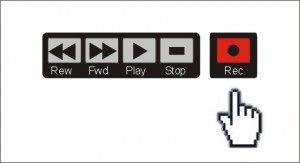An Overview of the Recording Process

by Jon Goad
Introduction
If you’ve never recorded in a professional studio before, it will be helpful to familiarize yourself with the recording process before you ever step foot in the studio. From start to finish, the process of recording a song includes several steps:
- Pre-production
- Setup
- Tracking
- Mixing
- Mastering
Pre-production
Pre-production is everything that happens before the recording session to prepare for the session. Perhaps the most important part of this stage is making final decisions about the song: the individual parts, arrangement, lyrics, etc. This stage should also include a considerable amount of time spent rehearsing the song to really get all of the parts down before attempting to record it. It may also be helpful to record a rough version of the song, even if it’s only on a cassette deck, so you can listen back to your performances and decide if you want to make changes before getting into the studio.
For more details about the Pre-production stage, check out my article on Four tips to Prepare for a Recording Session.
Setup
The Setup stage involves transporting your gear to the studio and setting everything up to prepare for the recording session. This includes assembling the drumkit, hooking up amplifiers, keyboards, etc. This stage also involves the setting up of mics on the instruments or amps to capture the sound. It may be beneficial to do as much of the setup as possible the day or night before the recording session is set to begin. This will allow you to simply come in and begin playing instead of spending too much time and energy on setting up prior to actually beginning the recording process.
Tracking
Tracking is the stage where the actual recording takes place–the song is performed by the musicians and recorded to tape (or hard disk, etc.) by the engineer. There are several common approaches to this stage. Many bands will record the basic rhythm tracks (rhythm guitar, bass guitar, keyboard, and drums) together at the same time. If the overall performance is good, they’ll simply punch in and out to clean up any noticable mistakes.
Other groups may prefer to record each instrument separately. They will record the drum tracks first, often with the drummer playing along to a “click track” to help keep them in time. Next will come the bass guitar, keyboards, rhythm guitar, etc., until the rhythm track is complete. When the rhythm track is finished, they will go back and add any guitar solos, other musical embellishments, and ultimately the lead and backing vocal tracks.
The approach that you take is ultimately up to you. Some bands prefer recording the rhythm tracks together, because they feel that recording this way most closely resembles a live performance, and usually captures a better “vibe” on the recording. Other bands prefer recording each instrument separately, as this provides the ultimate in separation, as there is no potential of one instrument bleeding into the mics of the other instruments. In general, tracking the instruments together captures more of a “live” feel, whereas recording them separately captures a more polished, or “studio” feel.
Mixing
In its purest form, mixing is the process of setting the loudness of each track relative to all of the other tracks so that all of the tracks are audible and give an overall pleasurable listening experience. Mixing also often involves the use of equalization (EQ), dynamics processing (compressors, expanders, and gates), and the application of effects (reverb, delay, etc.) to improve the sound of each track and create a cohesive overall mix for the song. Finally, mixing involves the “bouncing down” all of the separate tracks into a single stereo (left & right) track that can be played back on a standard listening device (car stereo, cd boombox, mp3 player, tape deck, etc.).
Mixing is usually performed by a mixing engineer, often without any input from the band or artist. In a small studio, the mixing is most likely performed by the same individual who recorded the raw tracks. Surprisingly to some, the mixing process can often be much more time-consuming than the recording of the raw tracks. Mixing is actually where much of the so-called “magic” takes place, where the mixing engineer takes plain, maybe even dull-sounding tracks, and polishes them into a completed song that is a pleasure to listen to.
Mastering
Mastering is the process of putting the finishing touches on an already-mixed stereo recording. As with mixing, this may involve the use of EQ and dynamics processing (Compression and Limiting), but usually the application of these devices in the Mastering stage is much more subtle. The use of dynamics processing in the Mastering stage also brings the loudness of the songs to a professional level, and matches the levels of each of the songs relative to one another. This helps to make the songs on an album sound like one cohesive collection rather than a group of separate songs that have been compiled together on a single album. Finally, Mastering also may involve setting Fade-ins and Fade-outs at the beginning and ending of the songs, setting the proper gap length between songs, and determining the final sequence of the songs on the CD.
Conclusion
After a song or album has gone through all of the above stages, it’s ready for duplication or distribution. If you have any more questions about the recording process that haven’t been covered in this article, please feel free to contact us through the Contact page.
 August 11, 2009
|
Posted by Jon (admin)
August 11, 2009
|
Posted by Jon (admin)

 Categories:
Categories: 